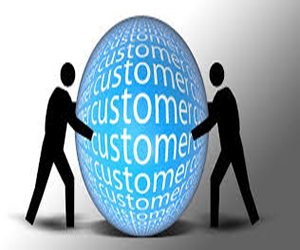Push and Pull Customers with Live Chat Software

As a rule, every contact with a customer will be a result of push or pull marketing. The Size, industry and business strategy of an organisation should all be taken into account when choosing the marketing to focus on. As providers of live chat software, it’s important that we understand the push and pull of customers. For those unfamiliar with the push and pull concept, read on for a quick explanation.
Pushing Customers
Push marketing is about bringing content to the user and is considered a more traditional marketing method. Brochures, flyers and catalogs are prime examples of this strategy. Today, the proliferation of mobile devices in the 21st century gives companies the ability to push advertisements straight to users’ devices, thus significantly renewing interest in push marketing. Unfortunately the rise of e-mail marketing has also made push marketing infamous for spam. Regardless of the type, a well-executed push marketing campaign will be three or four times more effective than a more traditional or non-digital approach. Other forms of push marketing include telemarketing, RSS feeds, text messages and browser pop-ups. The push strategy is all about placing products in front of potential customers in a targeted manner to create brand awareness (i.e. direct conversion is relatively low).
Pulling Customers
As predicted, pull marketing is the opposite of push marketing. Adopting a good pull strategy will encourage customers to initiate contact and create positive brand awareness. Billboard and posters are traditional examples whilst sponsored Facebook, Adwords and LinkedIn advertisements are the modern equivalent of pull marketing. This method is usually supported by other tools to provide a personalised display advert and an under-current of brand awareness. The amount of information that can be collected from website visitors allows for highly targeted pull marketing. Types of pull marketing include SEO, product placement and content marketing. The pull strategy is also about strengthening awareness so that you are easily found.
Contextualize
Deciding whether to push or pull a customer depends on the product or service that is being sold. For example, low value and/or impulse buy items should be pushed when the customer is about to pay. If a customer is buying a new TV, a push notification could remind them that they need to buy an adapter for the cable. If a customer spends time dawdling on the payment page, live chat software means you can push a chat towards them to reduce the risk of dropout.
On the other hand, a pull strategy is designed to stimulate demand for a product/service over a set period of time. This is particularly effective when used with customers that organisations have already established a relationship with. For example, many businesses use their CRM (customer-relationship-management) system to notify existing customers of their latest product.
The Physics of Marketing
As with physics, the best way to move an object in marketing is to push and pull at the same time. For example, investing in extensive display remarketing (pull) will embed the company name into customers’ minds and eventually be followed up with a monthly newsletter or brochure (push). Similarly, creating the right environment for a push or pull marketing campaign is paramount, identifying high traffic sites that fall within your niche or cleaning up email lists is an important part of any push or pull campaign. Bringing all these ingredients together is a recipe for boosting turnover and reducing shopping cart abandonment.
Finding a Balance
Every advantage has a caveat. Push marketing has a tendency to be disruptive and will generally have a lower success rate than its counterpart. This is particularly true with e-mail blasts that rely on fortuitous timing. Too much spam can also invite negative press. By comparison, pull marketing enjoys a higher level of engagement because customers seek out the business of their own accord. Then again, pull marketing is less reliable for smaller businesses.
Advertising is a science and, like science, success lies in experimentation; incubating the right mix of push and pull marketing until the final product is a perfect synergy. Live Chat software should be part of that strategy. Experience the advantages of balanced push/pull marketing yourself by trialling our live chat software for 14 days.
























